Pinakbet – Instant Pot + Stovetop
As an Amazon Associate and member of other affiliate programs, I earn from qualifying purchases.
The Filipino Pinakbet is a vegetable stew usually consisting of slices of eggplants, long green beans, okra, ampalaya (bitter melon), kabocha squash, and shrimps, cooked in a sauté of bagoong (shrimp paste). I’m sharing how to cook this in the classic way on the stovetop, or if you want it quicker, in the Instant Pot.
Pinakbet is a popular vegetable dish of Filipinos. In the Philippines, especially in the provinces, this dish can be cooked with backyard produce. And bagoong is a staple condiment in most homes. When we go back to my home in the Philippines, I always ask for this dish during our meals. I’ve been fortunate to try the pinakbet when we traveled to Pangasinan, the next-door province to my hometown in Tarlac. No other place has pinakbet as scrumptious as they do in Pangasinan. The large platter that came to our table was laden with fresh, crisp and colorful vegetables that tasted like they had been harvested that day. The salty, intensely-flavored bagoong laced the corners and crevices of each vegetable slice. The shrimps were plump and succulent. It was heavenly to pour it all on a mound of fragrant, steaming white rice.
When we got back to the States, I simply had to recreate the pinakbet for our family meal. I had nearly all the fresh vegetables and the shrimp paste from the Asian supermarket. As we savored the salty sauce cradling the eggplant, ampalaya and long beans, I felt grateful for the many opportunities that have come into my life—like traveling often back to the Philippines and relishing classic dishes that bring the family together at the table. It only takes a savory recipe like this to remind us of the abundance of blessings around us.
Pinakbet - Instant Pot + Stovetop
Equipment
- Instant Pot multicooker: 3, 6 or 8 quarts
- Large skillet or wok - for stovetop cooking
Ingredients
- 2 Tablespoons vegetable oil
- 4 cloves garlic minced
- 1 whole onion chopped
- 1 knob fresh ginger about 1-inch, peeled, sliced
- 1/2 pound fresh shrimps heads, tails removed, peeled
- 2 whole tomatoes sliced
- 1 cup cubed kabocha squash
- 2 pieces Asian eggplants sliced
- 2 cups sliced long green beans in 2-inch length pieces
- 8 pieces okra
- 1 piece ampalaya (bitter melon) sliced, seeds and white membrane removed
- 1 cup vegetable broth *Add 1 cup more if cooking in the Instant Pot
- 1 teaspoon ground black pepper
- 1/2 teaspoon salt
- 2 Tablespoons bagoong (shrimp paste) from Asian markets
- 1 piece carrot peeled, sliced (optional)
- boiled rice for serving
Instructions
- To cook on the stovetop:In a large skillet, over medium high heat add the vegetable oil. After 1 to 2 minutes, when oil is hot, saute the garlic, onions and ginger. Cook for 2 minutes till soft.
- Add the tomatoes and shrimps. Continue cooking for 5 to 6 minutes till shrimps turn pink.
- Pour the broth. Add the squash, eggplants, long green beans, okra and ampalaya to the skillet. Mix the ingredients.
- Season with salt and black pepper. Cover and cook over medium heat for 6 minutes till vegetables are soft.
- Add the bagoong (shrimp paste) to the vegetables and shrimps. Mix ingredients well.
- Serve warm with rice.
To cook in the Instant Pot:
- Click Saute function on the keypad: Add the oil to the inside pot of the Instant Pot.When oil is hot enough in about 2 minutes, saute the garlic, onions and ginger. Saute for 2 minutes till soft and fragrant.Add the tomatoes and shrimps. Stir around for 1 minute.Click Cancel to turn off Saute function.Pour the 2 cups broth, and add the squash, eggplants, long green beans, okra, ampalaya, and bagoong (shrimp paste). Season with salt and black pepper. There is no need to stir ingredients at this point.Close and lock the lid. Set the valve to Sealing. Press Manual and cook on High Pressure for 10 minutes. When cooking is complete, do a Quick Release and carefully unlock and open the lid. Click Cancel to make sure Instant Pot is turned off. Serve warm.
Notes on the Instant Pot:
- After the Saute function, it takes about 17 to 20 minutes for the Instant Pot to preheat and to begin High Pressure cooking. For other brands of multi-cooker please consult the manual.For safety precautions, use accessories only for the Instant Pot or multi-cooker like metal or silicone. Do not use glassware. Consult the product manual for safety.
Cook's comments:
- Other pinakbet recipes have pork belly or pork shoulder cubes. You can add this right after adding the shrimps. Keep in mind cooking time may take a few minutes longer if meat is added.
Nutrition
Notes on Nutrition: The nutrition information provided is an estimate and will vary based on cooking methods and specific brands of ingredients used.
Did you like this recipe? I have more Filipino Instant Pot recipes in my newest cookbook Instant Filipino Recipes: My Mother’s Traditional Philippine Cooking in A Multicooker Pot by Elizabeth Ann Besa-Quirino. Buy my cookbooks and books on Amazon.com sold worldwide in paperback and Kindle format.
Hello, Friends! Please DO NOT LIFT OR PLAGIARIZE my original recipe, stories, photos or videos. All the images and content on this blog are COPYRIGHT PROTECTED and owned by my media company Besa-Quirino LLC. This means BY LAW you are NOT allowed to copy, scrape, lift, frame, plagiarize or use my photos, essays, stories and recipe content on your websites, books, films, television shows, videos, without my permission. If you wish to republish this recipe or content on media outlets mentioned above, please ASK MY PERMISSION, or re-write it in your own words and link back to my blog AsianInAmericaMag.com to give proper attribution. It is the legal thing to do. Thank you. Email me at [email protected]
Disclosure: Instant Pot is the brand name of a multi-cooker that cooks in high and low pressure. I was not paid by the Instant Pot company to mention the product or brand nor endorse it. This is not an ad. My views and opinions are my own.

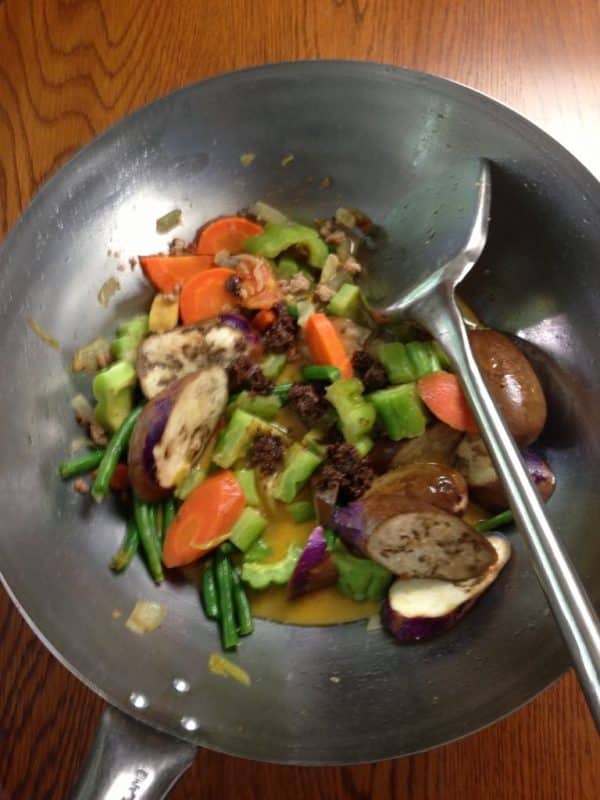
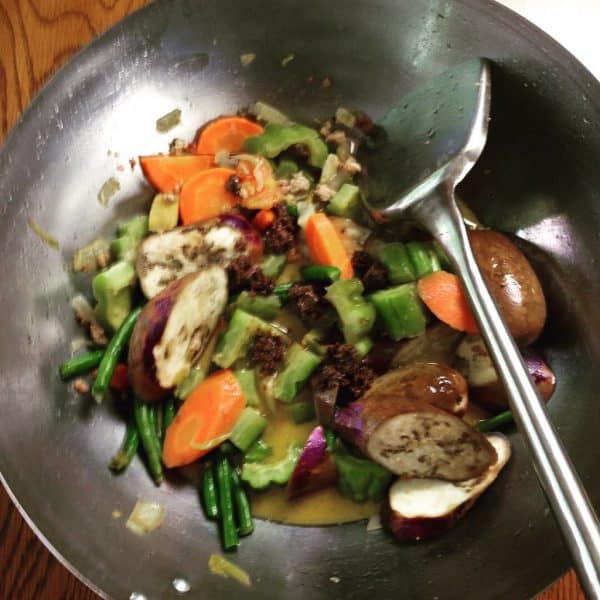
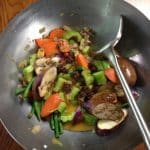
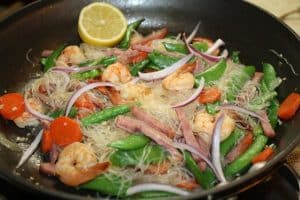
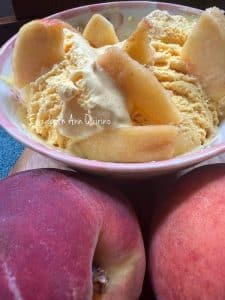




I want to clarify, if cooked in a pressure cooker, you double the fluid? I’ve always reduced the liquids if cooking in a pressure cooker because with that tightly closed pot there is no evaporation of liquids while cooking.